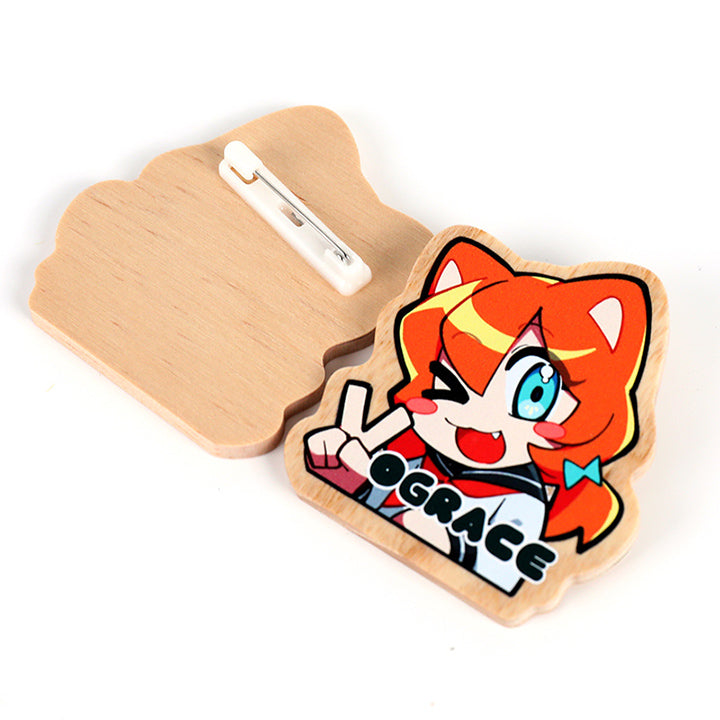Wooden pins are pins that are made to a specific size or shape to fit the needs of a particular woodworking or carpentry project. They can be made from a variety of wood species and can be sanded and finished to match the surrounding wood.
There are several ways to create custom wooden pins, including:
- Cutting: Wooden pins can be cut using a variety of tools such as a saw, lathe, or router.
- Shaping: Wooden pins can be shaped using tools such as chisels, planes, or sanders.
- Joining: Multiple pieces of wood can be joined together to create custom wooden pins, such as in the case of a laminated dowel.
- Finishing: Wooden pins can be sanded and finished to match the surrounding wood, using techniques such as staining or clear coating.
By creating wooden pins, woodworkers and carpenters can ensure that they have the exact size and shape needed for their project, rather than having to settle for a standard size or shape. This can be especially useful for projects that require a specific joint or connection, or for those with unique design elements.
Overall, wooden pins are a useful tool for woodworkers and carpenters who need a specific size or shape for their projects. By creating them using cutting, shaping, joining, and finishing techniques, it is possible to create a wide range of custom wooden pins to fit a variety of needs.
“Tips and Techniques for Installing and Maintaining Wooden Pins”
Here are a few tips and techniques for installing and maintaining wooden pins:
- Choose the right size and type of wooden pin for your project: Make sure to select a wooden pin that is appropriate for the size and type of wood you are working with. Measure the holes and the pins carefully to ensure a proper fit.Different types of wooden pins are suitable for different purposes, and it’s important to choose the right one for your needs. For example, dowels are best for creating a strong and stable connection, while biscuits are more suitable for reinforcing a joint.
- Pre-drill holes: To prevent splitting, be sure to pre-drill holes that are slightly smaller than the diameter of the wooden pin. This will allow the pin to be inserted more easily and will reduce the risk of damage to the wood.
- Use wood glue: Applying a small amount of wood glue to the wooden pin before inserting it can help to create a stronger, more durable connection.
- Tap gently with a hammer: When inserting the wooden pin, use a gentle tapping motion with a hammer to avoid splitting the wood.
- Use a clamp: After inserting the wooden pin, use a clamp to bring the two pieces of wood together and allow the glue to dry according to the manufacturer’s recommendations.
- Sand and finish: Once the glue has dried, you can sand and finish the wooden pin to blend it in with the surrounding wood. This will give a seamless and cohesive look to the project.
- Store properly: To ensure the longevity of your wooden pins, store them in a dry, well-ventilated area. Avoid exposing them to damp or humid conditions, as this can cause them to warp or rot.
Features of wooden pins
Here are some key features and characteristics of wooden pins:
- Made from wood:
Wooden pins are made from a variety of types of wood, such as oak, maple, cherry, or pine. The choice of wood may depend on factors such as the strength, durability, and appearance of the pin.
- Cylindrical shape:
Wood pins are typically cylindrical in shape, with a round cross-section.
- Range of sizes:
Wooden pins are available in a range of sizes, from very small to quite large, depending on the needs of the project.
- Versatile:
Wooden pins can be used for a wide range of purposes in woodworking and carpentry, including joining, reinforcing, and decorative applications.
- Strong and durable:
Wooden pins can create strong and durable joints, and are a reliable choice for many woodworking and carpentry projects.
- Aesthetic appeal:
Wooden pins can add a decorative touch to a project and can be sanded and finished to blend in with the surrounding wood.
- Natural, renewable resource:
Wooden pins are made from a natural, renewable resource, making them a more environmentally friendly choice compared to some other types of fasteners.
Overall, wooden pins are a useful and versatile tool in woodworking and carpentry, with a range of key features and characteristics that make them a reliable choice for many projects.

